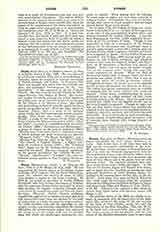

Stone, MARMADUKE, Jesuit, b. at Draycot, November 28, 1748; d. at St. Helens, August 21, 1834. He was educated at St. Omers, shared in its historic exodus to Bruges, 10-August 17, 1762 (see College of Saint Omer), entered the Society of Jesus in 1767, later became a master at the Liège Academy. In 1790 he succeeded as president to Father William Strickland, who then became procurator at London; with his assistance Father Stone succeeded in peacefully guiding the English ex-Jesuits through more than a score of tempestuous years (see John Milner; William Poynter). Father Stone’s confreres, though held together by a common vocation and their still uncancelled vows, were not allowed by the brief of suppression to reunite for purposes of government. He could therefore only rule by appealing to conscience; no easy task when one remembers the exterior difficulties, the adventuresome ardor that animated the young men of his college staff, and the peculiar ways into which the middle-aged missionaries were prone to subside. When dealing with the bishops, he could claim no rights, not even those essential to religious bodies. Fortunately, they were not hostile, though their views on Jesuit property and privileges caused Father Stone much trouble.
On July 14, 1794, the College at Liège was transferred to Stonyhurst College (q.v.). In spite of the magnitude of the task, it was accomplished in good order; and schools reopened October 22 following. A rescript from Propaganda (February 14, 1796) confirmed Stonyhurst in all the privileges of Liège. Though it was impossible to hope for a restoration of the Society during the Revolutionary and Napoleonic wars, it was not impracticable to work for a reunion with the Russian Jesuits, whose corporate existence had lately been recognized at Rome. In this Father Stone was successful. On May 19, 1803, having made his profession, he was declared provincial, and admitted others to their vows, for England, Ireland, and Maryland; on September 29 a novitiate was opened at Hodder. Rome, however, gave no public recognition of the restored order, though the pope privately expressed his pleasure. When the Bull of Restoration finally came (August 7, 1814), the interpretation was added (December 2, 1816), that it was to apply only where the secular government wished: in England, therefore, the Jesuits were to be regarded as still in their old position (see Society of Jesus). The college had grown enormously since its transfer to England and the Jesuit missions had prospered steadily. Father Stone, notwithstanding his years, continued to act as college minister till 1827, when he finally retired to St. Helens. Here the good news reached him (1829) that the English Jesuits had at last been formally recognized. Though he might not look an ideal leader, Father Stone was wonderfully adapted to his circumstances; his unfailing kindness, simplicity, sincerity, patience, and self-devotion were irresistible. If he acted slowly, he made no mistakes; he was capable of undertaking great enterprises, and of carrying them through with strong tenacity of purpose.
J. H. POLLEN

